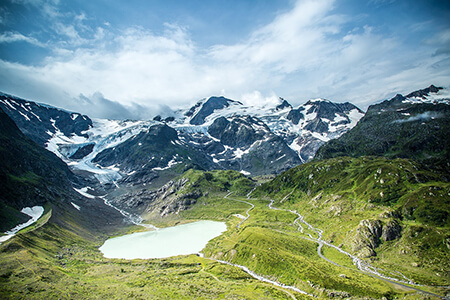This is a lesson summary. The full lesson can be viewed by purchasing an online course subscription.
Learning Objective
In this lesson we will learn how water moves through the hydrosphere via the water cycle and how this is affected by human activities.
Learning Outcomes
By the end of this lesson you will be able to:
- State where water can be found on Earth.
- Compare the abundance and distribution of salt water and fresh water.
- Describe the main processes that make up the water cycle.
- Discuss how factors such as latitude, topography and season affect the water cycle.
- Discuss how human activities affect the water cycle.
- Describe ways water can be conserved.

(Image: seanwareing, Pixabay)
Lesson Summary
- The hydrosphere incorporates all locations on Earth that contain water.
- It includes oceans, land, the atmosphere and living things.
- The hydrosphere mostly consists of water in the liquid form, but also as a solid (ice and snow) and a gas (water vapour).
- Saline water is water that contains high concentrations of dissolved salts.
- It is mainly found in oceans and accounts for almost all the water on Earth.
- Fresh water is water that contains low concentrations of dissolved salts.
- It mainly exists as polar ice and groundwater and accounts for only 2.5% of all water on Earth.
- Lakes and rivers, which are the main sources of water for humans, account for less than 0.01% of all water on Earth.
- The water cycle is a series of processes by which water is recycled through the hydrosphere.
- It includes:
- Evaporation – the transformation of water from liquid to gas as it moves from oceans or land into the atmosphere.
- Transpiration – the evaporation of water from plants.
- Condensation – the transformation of water from gas to liquid, forming clouds, fog or dew.
- Advection – the movement of water through the atmosphere.
- Precipitation – the movement of condensed water from the atmosphere to land or oceans, as rain, snow, hail or sleet.
- Runoff – the movement of water across land, including surface runoff – the movement of water over ground – and channel runoff – the movement of water in rivers and streams.
- Infiltration – the movement of water into the ground.
- Subsurface flow – the movement of groundwater.
- Regions closer to the equator are hotter and consequently experience more evaporation and precipitation.
- The orographic effect is the rising, cooling and condensation of atmospheric water as it encounters a mountain range.
- It results in precipitation on the windward side and a rain shadow on the leeward side.
- Different climates experience different rainfall patterns throughout the year.
- Humans impact the water cycle through activities such as the construction of dams, agriculture, deforestation and the burning of fossil fuels.
- Conserving water is critical for ensuring the continued availability of fresh water as a resource.

(Image: hugotorres, Adobe Stock)
(Header image: Y.S.Gangwar, Adobe Stock)
